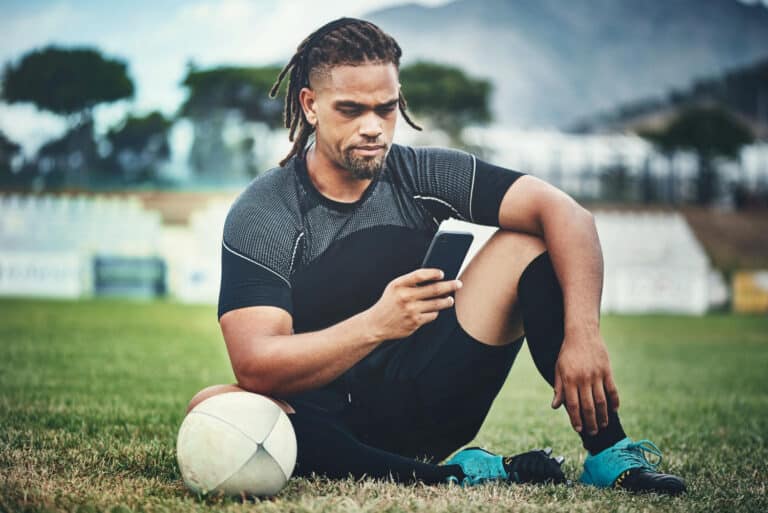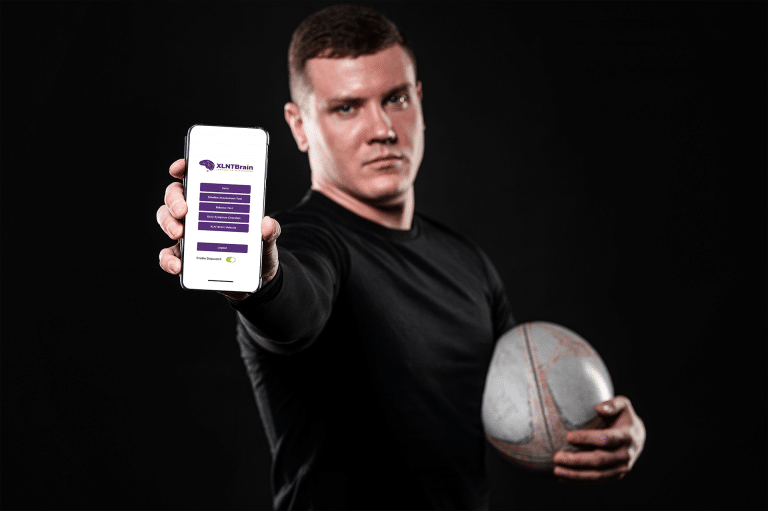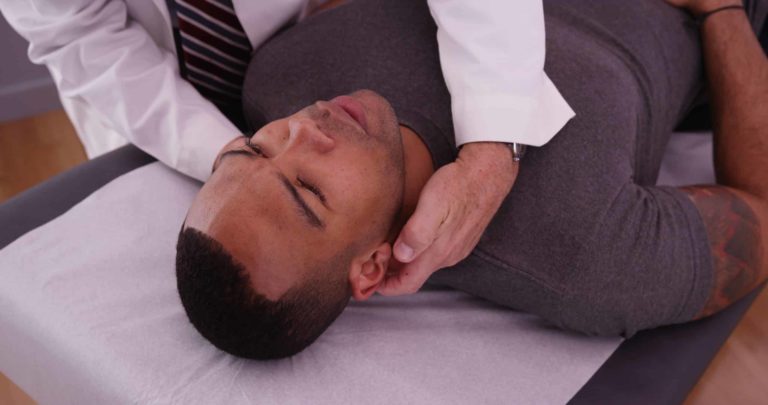A concussion can happen to any athlete, in any sport, at any level of play. Sometimes the signs are obvious, but other times they can be subtle, delayed, or even mistaken for fatigue or dehydration. Knowing how to recognize the warning signs of a concussion can make the difference between a safe recovery and a serious long-term complication.
At XLNTBrain, we understand how important it is for coaches, parents, and athletes to detect these injuries quickly and accurately. This guide will help you learn the top ten concussion symptoms and how to respond immediately to protect player health.
What Is a Concussion?
A concussion is a mild traumatic brain injury caused by a blow, jolt, or impact to the head or body that causes the brain to move rapidly inside the skull. This movement disrupts normal brain function, leading to a wide range of physical, cognitive, and emotional symptoms.
You can learn more about how concussions occur and the science behind them in our Concussion Overview.
Even though many concussions may seem minor at first, it is critical to take every possible sign seriously. Early recognition, rest, and follow-up testing are essential to ensure a full recovery.
The 10 Warning Signs of a Concussion
Here are the most common signs of a concussion that athletes, coaches, and parents should be able to identify immediately after a sports injury.
1. Headache or Pressure in the Head
This is one of the earliest and most consistent symptoms of a concussion. Players might describe it as a dull ache or a feeling of pressure that doesn’t go away even after rest or hydration.
2. Confusion or Disorientation
If an athlete seems confused about the score, their position, or what just happened in the game, it can indicate a disruption in cognitive function. This is a clear reason to stop play and perform an evaluation.
3. Dizziness or Loss of Balance
Trouble standing, walking straight, or coordinating movements are major red flags. Concussions often affect the brain’s balance centers, making it unsafe for the player to continue participating.
4. Blurred or Double Vision
Vision problems such as seeing spots, flashes of light, or double images can signal neurological disturbance. Always treat visual changes seriously, especially when combined with other symptoms.
5. Nausea or Vomiting
Feeling sick to the stomach or vomiting shortly after a hit is a strong indicator of concussion. These symptoms often appear quickly and may worsen with movement or light exposure.
6. Sensitivity to Light or Noise
If a player starts squinting, complaining about bright lights, or feels uncomfortable in noisy environments, it may point to brain hypersensitivity caused by trauma.
7. Slurred Speech or Delayed Responses
Difficulty speaking clearly or answering questions slowly can mean the brain’s communication pathways are temporarily impaired. This symptom requires immediate medical attention.
8. Fatigue or Drowsiness
A sudden drop in energy, unusual tiredness, or the need to sleep soon after a hit can indicate that the brain is struggling to regulate normal alertness levels.
9. Memory Problems
If the athlete cannot remember plays, events before or after the hit, or struggles to recall instructions, this is a classic concussion symptom that must not be ignored.
10. Mood or Behavior Changes
Irritability, anxiety, sadness, or sudden emotional outbursts are often overlooked but very common in concussion cases. They reflect the brain’s temporary inability to manage emotional control.
Why Recognizing These Signs Early Matters
Every concussion is unique, but the sooner symptoms are identified, the faster recovery can begin. Ignoring early warning signs can increase the risk of post-concussion syndrome, delayed healing, or long-term cognitive effects.
When in doubt, remember the golden rule of sports medicine: “If you suspect a concussion, sit them out and check them out.”
Early detection tools like baseline testing and sideline assessments play a crucial role in accurate diagnosis. With solutions like XLNTBrain’s features, coaches and medical teams can record data-driven results that remove guesswork from these critical moments.
How XLNTBrain Helps Identify and Manage Concussions
XLNTBrain offers a comprehensive concussion management system tailored for sports organizations, schools, and teams. Its tools help detect and track symptoms with precision, improving both safety and compliance.
Key features include:
- Baseline neurocognitive testing before the season begins
- Real-time sideline assessment tools to evaluate potential injuries
- Symptom tracking and recovery monitoring during rehabilitation
- Step-by-step Return-to-Play protocols that guide safe re-entry
- Centralized reporting for coaches, trainers, and medical staff
By combining technology with education, XLNTBrain empowers teams to respond immediately and make decisions based on data rather than uncertainty.
What to Do If You Suspect a Concussion
- Remove the player from the field immediately.
- Do not allow the athlete to return to play the same day.
- Perform a sideline assessment or refer to medical staff.
- Monitor symptoms for the next 24–48 hours.
- Use a concussion symptoms checklist and document all changes.
- Follow professional medical advice before returning to sports.
Protecting Players Starts with Awareness
Concussions can happen in any sport, but awareness and preparation make all the difference. Recognizing the signs early, using digital concussion tools, and following structured recovery plans help athletes return safely and confidently.
To learn more about how XLNTBrain supports sports organizations with evidence-based concussion management, visit our Concussion Overview or explore the full feature suite designed to protect players at every stage of the game.





